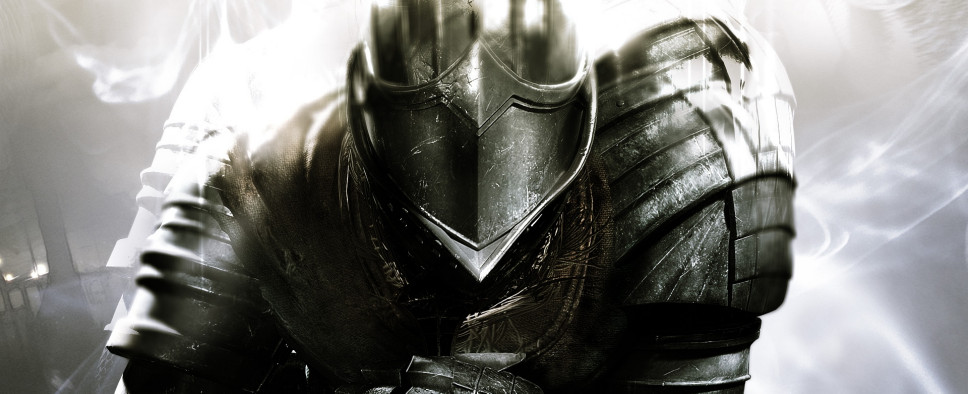Dark Souls and Praising the Sun
-
Category: News ArchiveHits: 1419

This article on PC Gamer digs deep to find the origins of the beloved gesture, and the staple of the Souls series – Praise the Sun. This gesture, along with the jolly Knight Solaire seem to be ill-fitting candidates for the unofficial mascots of the dark, pardon the pun, series. Read on if you want to know how that came to be:
Early light
Demon’s Souls was the foundation for the mechanics that we now think of as the souls-like genre—abstract multiplayer, maddeningly opaque lore, and soul-crushing difficulty. It’s commonly considered Hidetaka Miyazaki’s original creation that led to its popular Dark Souls offspring, but the genre, and the sun gesture with it, might not exist at all without Miyazaki’s rebellious spirit. In a 2015 interview with The Guardian, he explains how he took over the failing project:
“The project had problems and the team had been unable to create a compelling prototype. But when I heard it was a fantasy-action role-playing game, I was excited. I figured if I could find a way to take control of the game, I could turn it into anything I wanted. Best of all, if my ideas failed, nobody would care—it was already a failure.”
Dark Souls went from an obscure Japanese action RPG to a household name among PC gamers, so it's clear how that gamble turned out for Miyazaki. Demon’s Souls was more than just the origins of the souls genre. It was also the birthplace for Miyazaki’s sunlight scheme.
In Demon’s Souls, praising the sun only makes a guest appearance and isn’t referred to as “praising the sun.” Just like the rest of Dark Souls lore, it’s been there longer than anyone knew to look for it. It’s an uncommon gesture in Demon Souls, used only when a character casts a miracle while wearing the Ring of Sincere Prayer. In the Dark Souls Design Works set of interviews, originally only published in Japanese, Miyazaki explains how the gesture arrived first in Demon’s Souls and later in Dark Souls:
"That pose actually carries some significance for me. During Demon’s Souls, that was a holy sign. When I presented the game to the rest of the company, I showed them that pose and one of the higher ups told me it just wasn't cool enough. Of course I told him I'd get rid of it but I secretly kept it in the game. So naturally, with [Dark Souls] I was determined to use it."
After successfully smuggling the pose into Demon’s Souls, Miyazaki was determined to bring it with him to Dark Souls. To spread his holy message, he needed a prophet. Thus, the Warriors of Sunlight were born.
[...]
Sun language
Miyazaki gave created Solaire of Astora, the grossly incandescent Warrior of Sunlight, knowing full-well the impression he would leave on players. Even so, that alone would not have been enough to raise everyone's hands in sun-praising. Miyazaki's methods are more subtle than that.
Gestures are indispensable in Dark Souls. The entire game fundamentally restricts communication. You play a voiceless character who can often only interact with NPCs by gesturing or attacking. When it comes to multiplayer, the lack of both voice and text communication leaves you similarly hamstrung. To communicate with others, friend and foe alike, gestures became a dialect of their own. It became customary to bow before fighting a hostile player invader. It only made sense to give a good “hurrah” or jump with joy after a particularly difficult fight. You may even prostrate yourself if things are looking particularly dire. Then, after joining Solaire’s Warriors of Sunlight covenant later in the game—and who wouldn’t—you’re gifted a glorious new gesture. You can now praise the sun.
The beauty of praising the sun is that it has no baked-in meaning. Waving and bowing and pointing all have obvious uses based on real-world application. Before putting the gesture into players’ hands, throwing your arms up in the air with your palms out while standing tiptoed could have meant anything, but it's a unique gesture that only looks like a person preparing to swan dive or somehow take off flying.
Praising the sun was an opportunity for players to place their own meaning on the game world, rather than continue to excavate its vague item descriptions and cryptic cut scenes for scraps of information. In a series so bent on kicking the player while they're down, on dragging them through a broken record of humanity's greatest failures, it's a fun, hopeful gesture that rises to the top.
So with Solaire as their inspiration, everyone came to a collective, gradual decision on the meaning of praising the sun. It would be a sign of joy, hope, and jolly cooperation.

